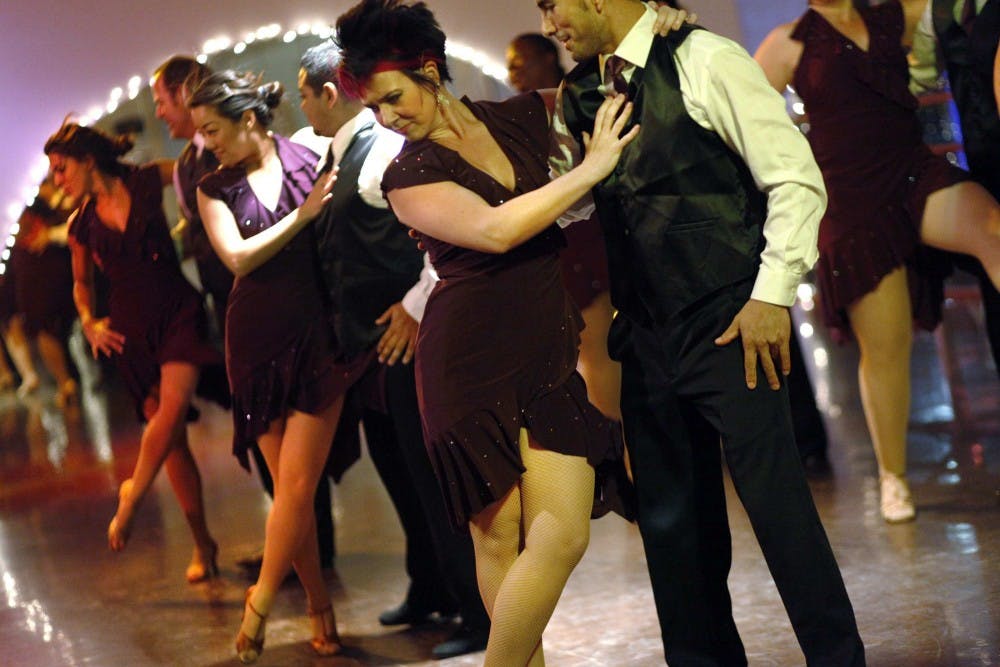Through the celebration of art and culture, Hispanic Heritage Month gives Arizonans and ASU students the opportunity to properly explore new and different components within the Latino culture. #HHM is a designated time to celebrate the culture, history and heritage of thousand of Latinos living in the U.S.
In Arizona, a state with a growing population of Latinos, a new social engagement is becoming more evident: salsa dancing. The growing presence of this cultural element resembles the diversity within this minority group, as it is predicted by 2050 Latinos will account for 29 percent of the U.S. population.
By integrating salsa dancing, Arizonians and ASU students have the opportunity to explore alternative identities within this group as most Latinos in Arizona are of Mexican origin.
The salsa dancing community in Arizona is not growing in proportion to the Hispanic population because, truthfully, salsa has little relationship with the history of the Latino community in the Southwest. Salsa is a mixture of genres introduced by members of different ethnic backgrounds such as Cubans, Puerto Ricans and African Americans in Spanish Harlem, New York or known as, El Barrio. Yes, salsa was born in the U.S.
This music genre is the result of an important part of not only Latino history in the U.S. but also a big part of the country's history as a whole. It represents a period of transition as immigrants started building a new identity based on their reality of "The American Dream."
"There was a definite move toward establishing identity and being proud of who you were and also establishing a sense of history." -Felipe Luciano
Afro-cuban music such as rumba, son montuno, guaracha, cha cha cha as well as Puerto Rico's Afro-Caribbean influences came together with jazz and funk music that led to Latin boogaloo and eventually salsa.
The result: a music style that is seen today as an umbrella genre within the Latino culture.
Eventually, salsa developed to what we know of it today: a rhythmic, hot and sexy dance where women move their hips as men guide them through spins and twirls.
ASU students, as well as some Arizonians, are actively enjoying and encouraging this dance genre through social events in the Valley.
At ASU, Latin Ballroom Dancing courses are offered for students who have an interest in learning this genre as well as bachata, mambo and chacha. Each month, dance instructors at ASU organize free social events that gives students the opportunity to engage in social dancing.
Other students like, Jerry Xue, an ASU Ph.D. student enjoys the social aspect that comes with salsa dancing.
"It's a very social dance and to me it is a very sexy dance," he said.
ASU alumni, Nhu Le started taking Latin Ballroom courses during her sophomore year.
"You never know who you're going to end up dancing with," she said.
Le, originally from Vietnam, explains how much she enjoyed dancing, the music and the friendly environment at the social events.
As this new cultural avenue is encouraged, it should be properly explored in its early stage before students become completely unaware of its historical context.
The conversation about Latinos, specially through HHM celebrations, should revolve around its diversity as a group through multiple cultural constituents.
Salsa, like other cultural components, is a connection to heritage, an emblem of segregation and marginalization put to rest.
It is up to us to acknowledge and appreciate this process in order to properly celebrate heritage, culture and history as we know it today.
Reach the columnist at cmsanti1@asu.edu or follow @santiagoc_17 on Twitter.
Like The State Press on Facebook and follow @statepress on Twitter.
Editor’s note: The opinions presented in this column are the author’s and do not imply any endorsement from The State Press or its editors.
Want to join the conversation? Send an email to opiniondesk.statepress@gmail.com. Keep letters under 300 words and be sure to include your university affiliation. Anonymity will not be granted.




